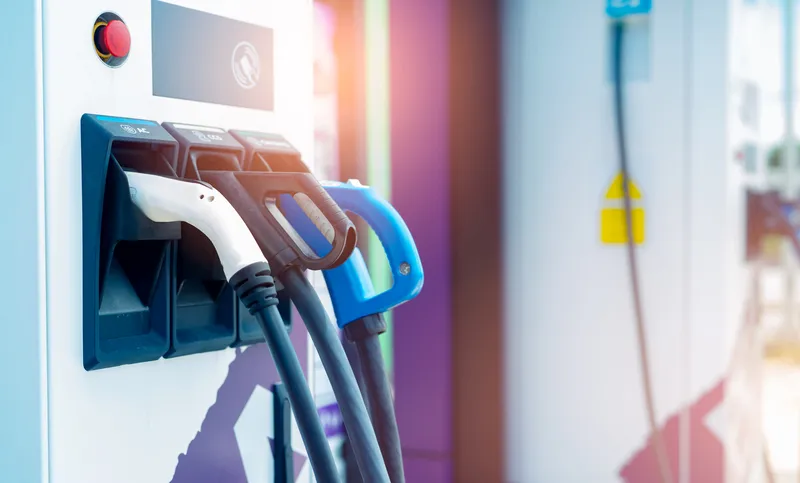The industrial and commercial sector is the largest part of the electric vehicle value market and that will continue to be the case according to analysis in the IDTechEx report, Industrial and Commercial Electric Vehicles 2017-2027.
Buses are the largest part of that and they are mainly made in China for China, where typical orders are ten times the size of orders elsewhere. Less dramatically, construction, mining and agriculture do not see 70 per cent grants for EV versions yet they are steadily becomin
December 20, 2016
Read time: 4 mins
The industrial and commercial sector is the largest part of the electric vehicle value market and that will continue to be the case according to analysis in the 6582 IDTechEx report, Industrial and Commercial Electric Vehicles 2017-2027.
Buses are the largest part of that and they are mainly made in China for China, where typical orders are ten times the size of orders elsewhere. Less dramatically, construction, mining and agriculture do not see 70 per cent grants for EV versions yet they are steadily becoming large EV sectors for many other reasons. Agriculture will see further moves from large to small as some farms go indoors sometimes into high rise buildings and pure electric agri-drones and robotics on land continue to attract.
The term construction machine market essentially refers to mobile machines with tools for tasks such as excavating, bulldozing and loading. Such machines are increasingly used in urban environments with associated legislative and market pressure for no carbon dioxide, acid gas or particulate emissions, better performance and near silent working including indoors. The machine typically made for outdoors is appearing with an indoor and night time option at the flick of a switch. The report forecasts over US$15 billion of hybrid and pure electric construction vehicles being sold in 2027, more than today’s combined sales by number two and three in the conventional construction machine business today so everyone is paying attention.
The construction machine market wobbles up and down with 664K machines 2016 versus 694K in 2015. A significant minor percentage is already “electric drive” meaning the diesel engine delivers motive and tool power by generating electricity into an electric motor with no significant battery storage involved, no pure electric mode being possible. This is like a diesel-electric ship or train and it does not come within the definition of an EV. Separate from construction is the intra-logistics market otherwise known as material handling which is mainly forklifts in larger numbers – a market at the million a year level - though there is an overlap in manufacture and use of these machines with those in construction.
Suppliers developing and offering hybrid and pure electric vehicles for construction are finding many subtle benefits. Tools work more precisely, responsively and with higher power surges when electric and their braking energy is easily grabbed by supercapacitors instead of wasted as heat. Reliability hugely improves and ground pollution and danger from leakage of hot hydraulic fluid becomes a thing of the past. Four wheel vectored electric traction and drive reduces fuel consumption and damage to surfaces. Hybrids supply electricity to other equipment and, where needed, emergency services at destination. Near wheel electric motors eliminate axles making for a smaller, more easily manoeuvred and lower cost machines.
The current growth area of construction vehicle numbers is ‘compact’ ones for use in congested cities and these lend themselves to being EVs because a city construction vehicle can need expensive temporary fume extraction when in a building and, in or out, the diesel version may be allowed only four hours a day to make its noise and emissions: one with pure electric mode may be allowed to work up to 24 hours, offering faster payback.
Anyway, compact versions are preferred in countries like Japan and India. JCB sees compact excavator demand in India leaping from 600 in 2016 to 2400 in 2021. The mini excavator market is already US$5 billion globally. However, IDTechEx does not expect the majority of compact construction vehicles to be EVs for some years – just an increasing percentage driven by the fact that they can be used for a longer part of the day and night, indoors and in response to impending emissions laws. Maybe in 2025 the majority will be EVs, hybrid or pure electric.
An example of a compact construction vehicle is the diesel (not EV) JCB Hydradig launched in 2016 and immediately sold out to the end of the year. It works in ‘small building sites with tight access’ with exceptional manoeuvrability and yet travels at 40 kph on the road. In addition there is a modest scope for autonomy though the legal and technical issues when autonomous near animals and the public are formidable. This is a parallel problem to autonomous cars and to sit-on industrial mowers in parks, on road edges and sports fields. By contrast, the less dangerous small robot home lawnmowers from Honda, John Deere, Husqvarna and others are at last taking off in Europe.
Buses are the largest part of that and they are mainly made in China for China, where typical orders are ten times the size of orders elsewhere. Less dramatically, construction, mining and agriculture do not see 70 per cent grants for EV versions yet they are steadily becoming large EV sectors for many other reasons. Agriculture will see further moves from large to small as some farms go indoors sometimes into high rise buildings and pure electric agri-drones and robotics on land continue to attract.
The term construction machine market essentially refers to mobile machines with tools for tasks such as excavating, bulldozing and loading. Such machines are increasingly used in urban environments with associated legislative and market pressure for no carbon dioxide, acid gas or particulate emissions, better performance and near silent working including indoors. The machine typically made for outdoors is appearing with an indoor and night time option at the flick of a switch. The report forecasts over US$15 billion of hybrid and pure electric construction vehicles being sold in 2027, more than today’s combined sales by number two and three in the conventional construction machine business today so everyone is paying attention.
The construction machine market wobbles up and down with 664K machines 2016 versus 694K in 2015. A significant minor percentage is already “electric drive” meaning the diesel engine delivers motive and tool power by generating electricity into an electric motor with no significant battery storage involved, no pure electric mode being possible. This is like a diesel-electric ship or train and it does not come within the definition of an EV. Separate from construction is the intra-logistics market otherwise known as material handling which is mainly forklifts in larger numbers – a market at the million a year level - though there is an overlap in manufacture and use of these machines with those in construction.
Suppliers developing and offering hybrid and pure electric vehicles for construction are finding many subtle benefits. Tools work more precisely, responsively and with higher power surges when electric and their braking energy is easily grabbed by supercapacitors instead of wasted as heat. Reliability hugely improves and ground pollution and danger from leakage of hot hydraulic fluid becomes a thing of the past. Four wheel vectored electric traction and drive reduces fuel consumption and damage to surfaces. Hybrids supply electricity to other equipment and, where needed, emergency services at destination. Near wheel electric motors eliminate axles making for a smaller, more easily manoeuvred and lower cost machines.
The current growth area of construction vehicle numbers is ‘compact’ ones for use in congested cities and these lend themselves to being EVs because a city construction vehicle can need expensive temporary fume extraction when in a building and, in or out, the diesel version may be allowed only four hours a day to make its noise and emissions: one with pure electric mode may be allowed to work up to 24 hours, offering faster payback.
Anyway, compact versions are preferred in countries like Japan and India. JCB sees compact excavator demand in India leaping from 600 in 2016 to 2400 in 2021. The mini excavator market is already US$5 billion globally. However, IDTechEx does not expect the majority of compact construction vehicles to be EVs for some years – just an increasing percentage driven by the fact that they can be used for a longer part of the day and night, indoors and in response to impending emissions laws. Maybe in 2025 the majority will be EVs, hybrid or pure electric.
An example of a compact construction vehicle is the diesel (not EV) JCB Hydradig launched in 2016 and immediately sold out to the end of the year. It works in ‘small building sites with tight access’ with exceptional manoeuvrability and yet travels at 40 kph on the road. In addition there is a modest scope for autonomy though the legal and technical issues when autonomous near animals and the public are formidable. This is a parallel problem to autonomous cars and to sit-on industrial mowers in parks, on road edges and sports fields. By contrast, the less dangerous small robot home lawnmowers from Honda, John Deere, Husqvarna and others are at last taking off in Europe.









